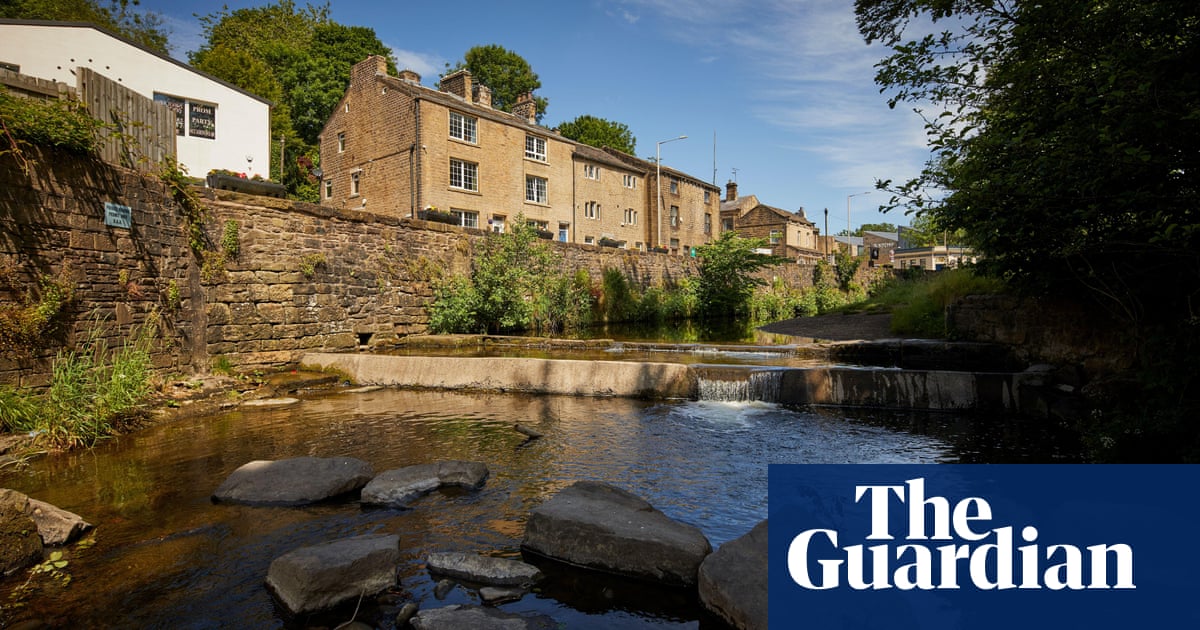
aking a bath properly requires being able to guiltlessly linger, hang out, and/or do nothing whatsoever.” So said Leonard Koren, the American design philosopher, who also holds the lofty-sounding title of “bathing expert” and who, in 1976, founded Wet magazine, a periodical dedicated to gourmet bathing.
There was no stipulation of a good view, but a bath with a view and space to linger in is precisely what architectural photographer Edmund Sumner and his wife, Yuki, an architectural writer, consultant and author created when they converted the attic of their Edwardian home in south London.
Its 180-degree view takes in an impressive sweep of south London: stacked chimneys and Victorian streets that snake towards the Shard, Canary Wharf and the O2 dome, which at night pulsates like a scene from Blade Runner. Below, to the rear of the house is dense green woodland. “You really live through the seasons,” says Edmund. “The best views are during the winter when the trees are bare.”
The couple, who have spent 20 years working in architecture (collaborating with practices that include David Chipperfield, John Pawson, David Adjaye and Tadao Ando), weren’t entirely sure what they wanted when it came to building their own house.
“It needed a modernist frame; nothing too organic,” says Edmund, “but I wanted something that a developer wouldn’t do.”
It was when he chanced upon architect Simon Astridge’s Clay House in Tufnell Park, London, with its arakabe – or clay – walls that he realised that he had been looking for Astridge in his head all along.
The brief for Astridge was to create a floor for two children on the cusp of teenagedom – a beautiful space in which to live and learn; a study for Yuki and Edmund, as well as a bedroom for the couple to escape to.
Both were drawn to the poetry of Astridge’s work. “From our earliest conversations, we explained we didn’t want a typical white box,” says Yuki. “Simon mentioned arakabe… that Japanese link was very important for me. Our new home feels like the bringing together of two homes and solidifying my foundation here.”
Clay walls are also known for absorbing carbon dioxide because they are plant-based. “It purifies the air and is really good for people with asthma. Guy Valentine did a wonderful job of the plastering, and clay gives a beautiful receding matt-ness to the wall.”
Bringing the landscape into the house was important for Astridge – framing the view as well as, literally, bringing in leaves (hence its name, Leaf House) foraged from the woodland which were dried and crushed and mixed into the arakabe. Leaves are also imprinted into the structure near light switches or on the bedroom ceiling.
Important, too, for Astridge was thinking about design in terms of the activities within the spaces. “I like to think in verbs. I’m more interested in the sleeping, communing… rather than a bedroom, a kitchen – the nouns which we assign to particular areas. It makes for a deeper interrogation of the experience of the space and the materials and light used in each area.”
A brand new mild-steel staircase was installed. The metal was left to rust a little and then sealed in.
The Sumners wanted to create a simple bedroom that was different from the average loft extension. And they didn’t want to squeeze too much into it.
“I’ve photographed countless attic extensions that are white boxes which all too often are taken up by storage space. They’re hot in summer and too cold in winter,” says Edmund. “We wanted something simple, open and calm.”
The couple’s headboard sections off part of the room, but most of it has been left as open space. “This was down to Simon’s understanding of the importance of ma – the Japanese concept of the in-between space of nothing,” he says. It is very spare, other than one wall of plywood cupboards, a Hans Wegner chair and the wall lights by Olivier Abry from Wo and Wé.
Astridge was especially keen to know about Yuki and Edmund’s routine. “It’s important to start with the humans and their actions in that space. The architecture should then evolve around that. It isn’t merely how does it look and let’s shove the bath here and make it work.”
The William Garvey bath is a focal point in the room. Made from teak in Devon, it is Japanese-inspired and recalls the ritual of onsen (bathing in hot springs).
Astridge is also an advocate of sensory architecture: “Steel makes a certain sound and feels different under foot to say, cork. Cork and clay also have a sound. It’s a very sensual thing. He points to the floor by the bath: “Does the floor texture change as you step from there to here? When you step out of it, is it cold, is it warm? It’s a profound care about how a human uses architecture; that is what really interests me.”












